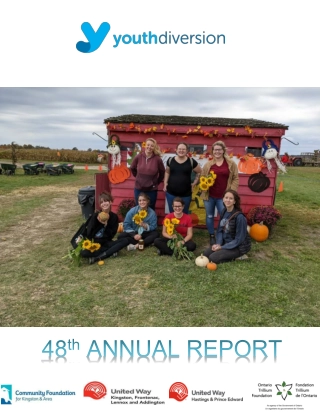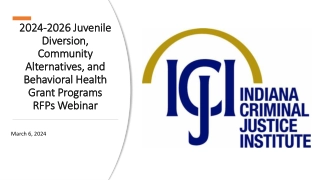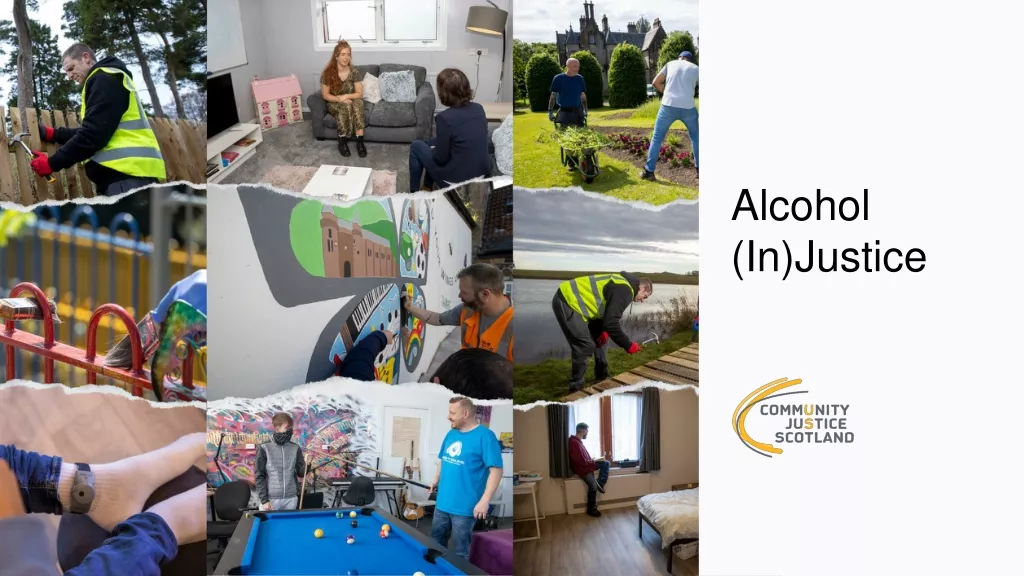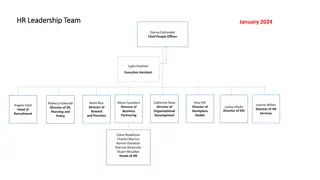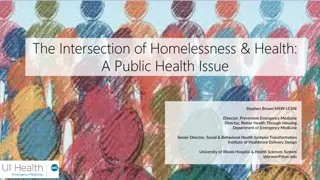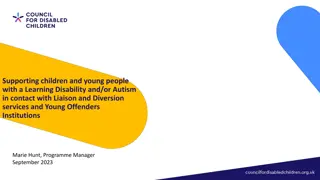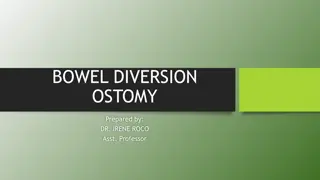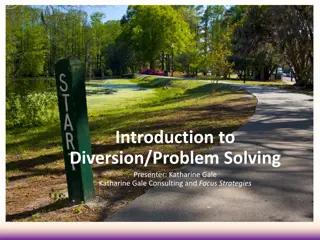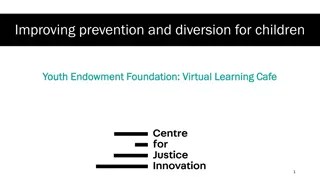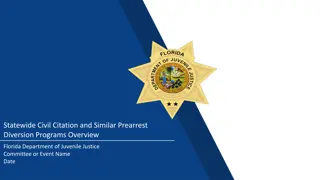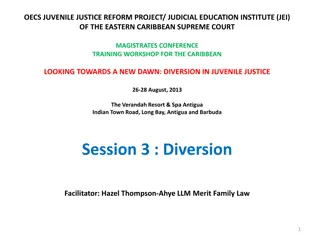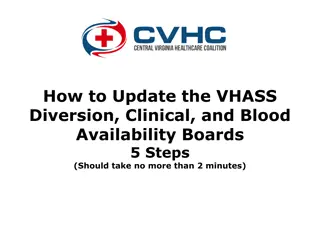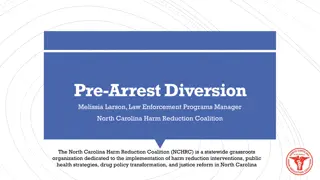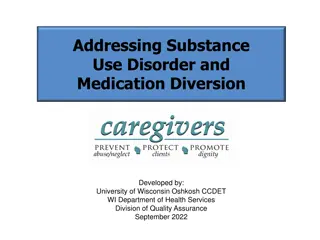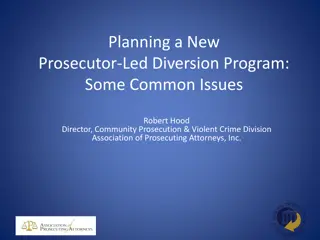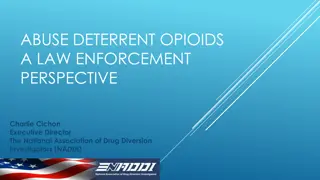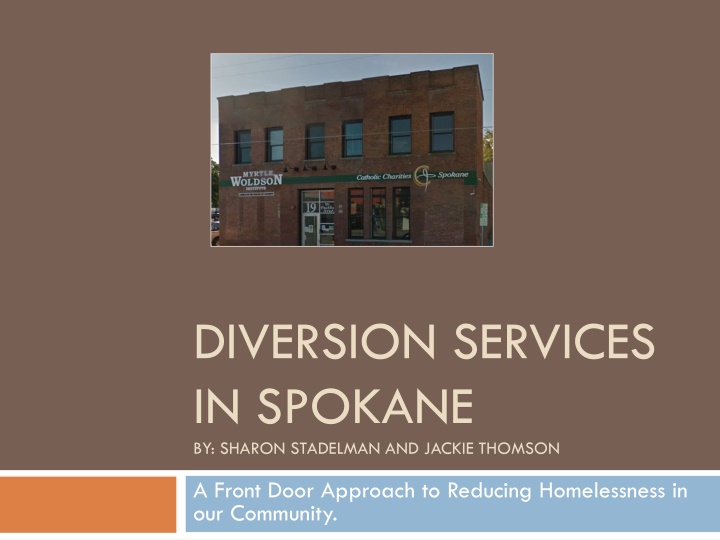
Innovative Diversion Services for Reducing Homelessness in Spokane
Discover how Sharon Stadelman and Jackie Thomson are leading a front-door approach to reducing homelessness in Spokane through intensive and skilled intervention using a Diversion-First model. Learn how they aim to redirect those experiencing homelessness, especially vulnerable households, to alternative housing options, ultimately reducing shelter stays and conserving homeless housing resources in the community.
Download Presentation

Please find below an Image/Link to download the presentation.
The content on the website is provided AS IS for your information and personal use only. It may not be sold, licensed, or shared on other websites without obtaining consent from the author. If you encounter any issues during the download, it is possible that the publisher has removed the file from their server.
You are allowed to download the files provided on this website for personal or commercial use, subject to the condition that they are used lawfully. All files are the property of their respective owners.
The content on the website is provided AS IS for your information and personal use only. It may not be sold, licensed, or shared on other websites without obtaining consent from the author.
E N D
Presentation Transcript
DIVERSION SERVICES IN SPOKANE BY: SHARON STADELMAN AND JACKIE THOMSON A Front Door Approach to Reducing Homelessness in our Community.
Our Service Philosophy for Diversion Our overarching goals are to reduce the number of households entering the homeless area by 50% and re-direct those experiencing homelessness for the first time to alternative options for housing stability. We also want to avoid the trauma of shelter stays especially for households with vulnerable children, and to conserve our limited homeless housing resources. We provide intense, comprehensive and skilled intervention through a Diversion-First model. We encourage our households to be pro-active and return to Diversion if they need further assistance.
What is Diversion? Diversion in Spokane: simply enhancing the conversation you already have with households! This can be done over the phone, in person at your CA portal, or as a front door shelter intake conversation. Diversion provides resource-sharing and innovative solutions to fill gaps between housing instability and homelessness. It s a critical component in our Coordinated Assessment systems. It s teaching us all to be a comprehensive Resource Coordinators. Locally, we provide Diversion Services for both Singles and Families in our community.
Essential Link: CA and Diversion How we provide a Diversion-First Model ALL CA staff are cross-trained in Diversion and CA assessments. Diversion First: All HH coming into our walk-in hours qualify for Diversion and meet with a case manager right away. We are able to provide services to any household due to having diverse and flexible funding stream supporting Diversion in our community. Initial conversation with all households=Diversion. CA acts as a separate intervention only after the initial Diversion conversation. If households are still in need of homeless housing resources, households proceed with the CA enrollment process otherwise Diversion case managers will continue working with the household to overcome their housing crisis.
Our Process We DO NOT have funding for rental assistance We are not a money program! Length of Diversion services: Average length of enrollment-- 1month of services with extensions given for up to two months. Services Provided: Education and advocacy, landlord mitigation, conflict resolution, housing search and stabilization, community resource triaging, connection to mainstream employment and income resources, collaborative problem-solving, and VERY limited financial assistance for approved costs (no rental assistance dollars) that will lead to housing stability.
Diversion-First Model in Action: Service Delivery at our CA (HFCA) Portal: Service Delivery at our CA (HFCA) Portal: (3) Referrals to Homeless Housing programs (2) CA Assessment (1) Diversion conversation: *Proceed to Diversion case load OR CA Assessment based upon client choice. Households either call or visit us during walk-in hours: M-TH from 12:30-5pm.
Whats worked well? Helping households identify their own intrinsic strengths and resources as a solution to their housing crisis. Having pre-existing landlord relationships and understanding the ins and outs of landlord tenant laws. Becoming community resource experts and creating new collaborative community partnerships We cannot emphasize this enough know what your community has to offer and partner with these agencies. Strategically connect households to resources that are already in existence that can meet their need. You do not have to do everything!
Diversion in Practice When in doubt--summarize! Powerful Questions: What would you like to see happen today? How do you see that happening? What could you do to make that happen? What could I help you with to make that happen? What does_________(self-identified goal from client) look like to you? How can I help you to work towards your goal of ____________ and blank______?
Lets Practice! Listen, Summarize and use Powerful Questions Pick a partner: One is the client and one is the diversion case manager. 5 minutes then switch roles How did it feel being the client/case manager?
What have been the biggest challenges? Reshaping the community message Erasing the prevention $$ concept and instilling a new philosophy of providing service, mediation and access to community resources as possible solutions for housing crisis. Money is not the only or sometimes best intervention. Really high case loads Solution: Commitment: HH s sign program agreement/ commit to the program. We remind households that are always able to re-assess when/if their circumstances change, and we are still able to connect with CA portal for homeless housing resources if the Diversion intervention does not work.
Outcomes: Jan2016-March 2017 Of the 564 households enrolled in Diversion, only 102 of them became enrolled in another homeless program within this time frame. ES Shelters to all RRH programs in our community Looking currently at an 82% success rate Best practice looks at 90 days
Outcomes: Jan 2016- March 2017 564 HH with 377 exiting to positive destinations=67% success rate Positive Exits Staying or living with family or friends, temporary tenure (e.g., room, apartment or house) 69 Staying or living with family or friends, permanent tenure 31 Rental by client, other (non-VASH) ongoing housing subsidy 51 Rental by client, no ongoing housing subsidy 223 Owned by client, no ongoing housing subsidy 3
Questions? Thank you! Additional Resources: http://www.endhomelessness.org/page/-/files/3.08%20Diversion- %20Best%20Practice%20for%20Preventing%20Homelessness%20Katherine%20Gale%20Tricia%20Bradly %20Marlyn%20Benker.pdf
Contact Information Sharon Stadelman Director, St. Margaret s Shelter 101 E. Hartson, Spokane, WA 99202 509.624.9788 sstadelman@ccspokane.org Jackie Thomson Assistant Director of Community Housing 19 W. Pacific Spokane, 99201 (509) 325-5005 ext. 102 jthomson@ccspokane.org


